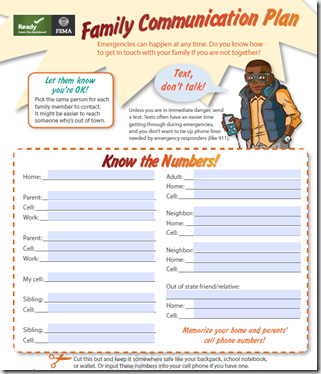Please help the National Weather Service spread these important safety messages on social media! Everyone is welcome to use the text and images provided below to help the NWS build a Weather-Ready Nation.
Facebook
Wind is a part of weather we experience all the time, but why does it actually happen? This video covers the basics: youtu.be/kb9oRYUzlwQ #WindScience
Twitter
Wind is a part of weather we experience all the time, but why does it actually happen? This video covers the basics: youtu.be/kb9oRYUzlwQ #WindScience
Facebook
High winds can be dangerous! Identify an interior room in your house or at work that you can take shelter in during high wind warnings. If you are driving, hold the steering wheel with both hands and slow down, and keep a distance from high profile vehicles. Be aware of loose outdoor items and stay clear of trees. For more information on wind safety, visit weather.gov/wind. #WindSafety #WeatherReady
Twitter
High winds can be dangerous! Visit weather.gov/wind for safety tips and resources. #WindSafety #WeatherReady
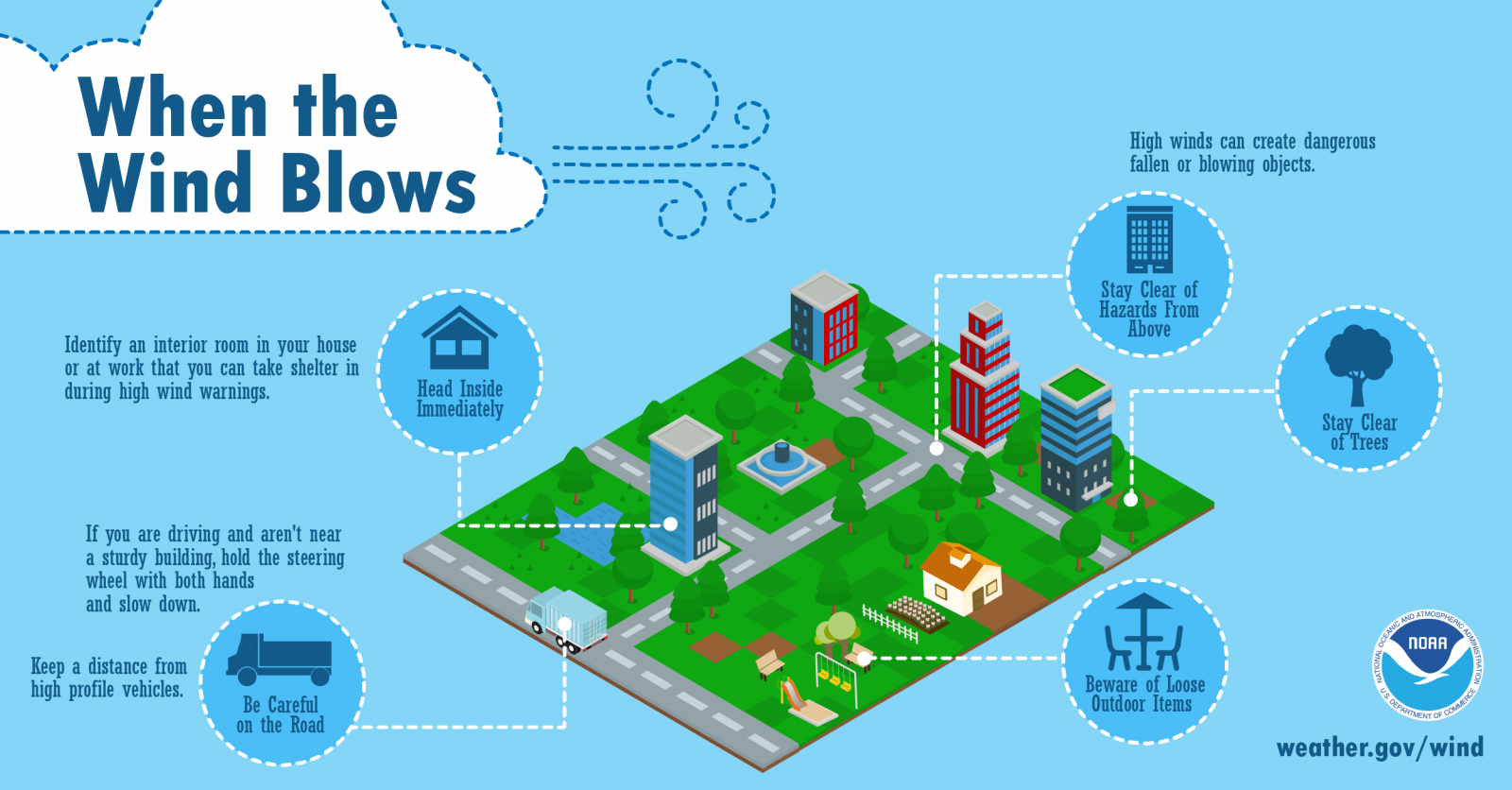
Facebook
Santa Ana winds are strong downslope winds that blow through the mountain passes in Southern California. They are created over the Great Basin region from high-pressure air masses, which then blow down towards sea level. These winds, which can easily exceed 40 miles per hour (18 m/s), are warm and dry and can severely exacerbate brush or forest fires, especially under drought conditions. For more info, visit https://earthobservatory.nasa.gov/NaturalHazards/view.php?id=10727. #WindScience
Twitter
Santa Ana winds can exceed 40 mph and can worsen forest fires. https://earthobservatory.nasa.gov/NaturalHazards/view.php?id=10727 #WindScience
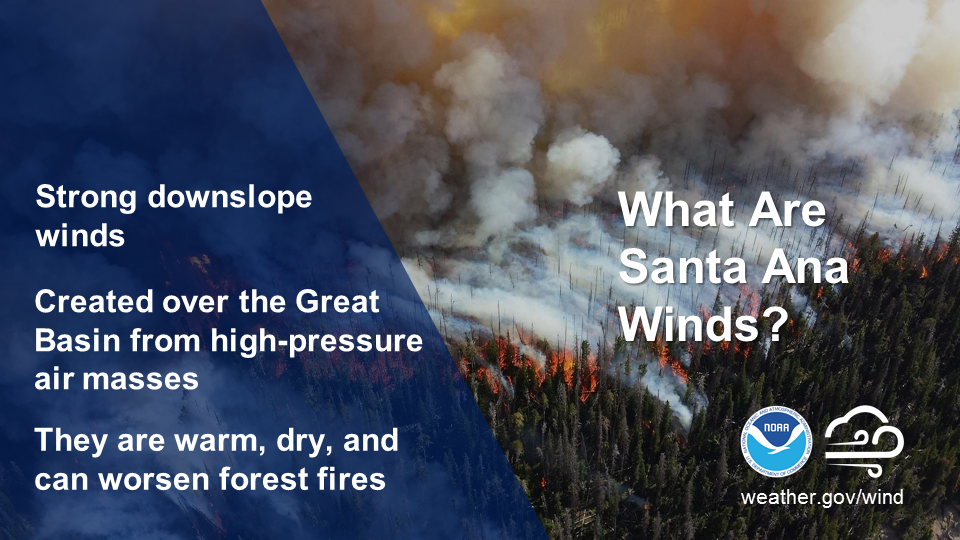
Facebook
Extremely cold air comes every winter in at least part of the country and affects millions of people across the United States. The arctic air, together with brisk winds, can lead to dangerously cold wind chill values. weather.gov/safety/cold #WinterScience
Twitter
Arctic air, together with brisk winds, can lead to dangerously cold wind chill values. weather.gov/safety/cold #WinterScience
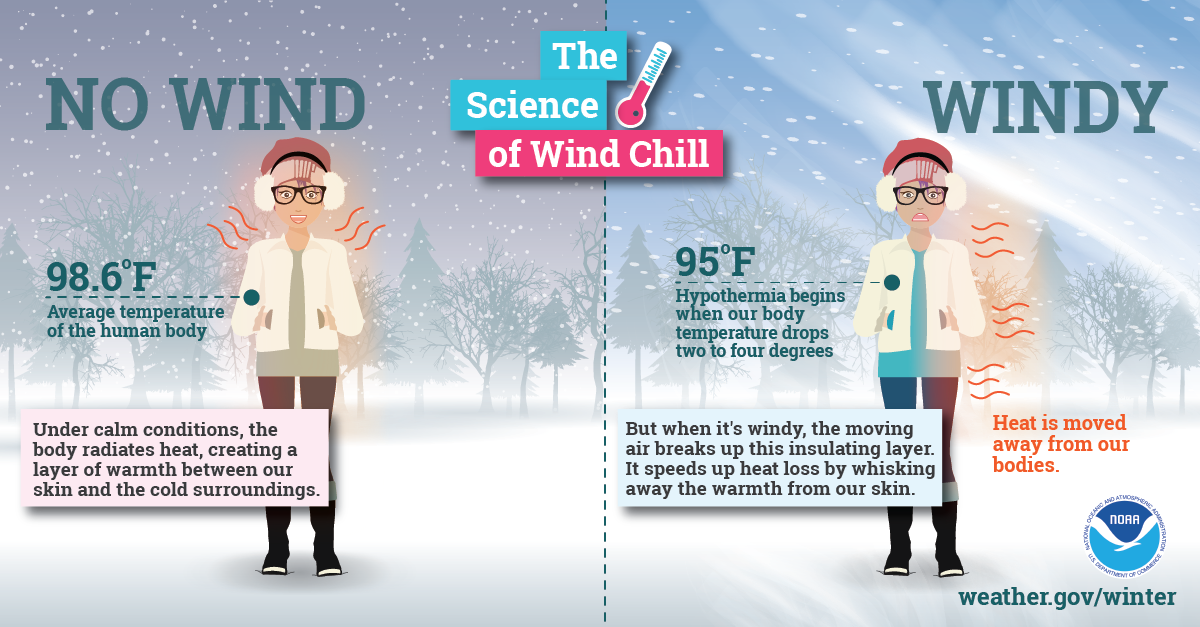
Facebook
Here are some useful safety tips if you get caught driving in a dust storm. Visit weather.gov/wind to learn more about #WindSafety. #WeatherReady
Twitter
Driving in a dust storm is dangerous. Learn more at weather.gov/wind. #WindSafety #WeatherReady
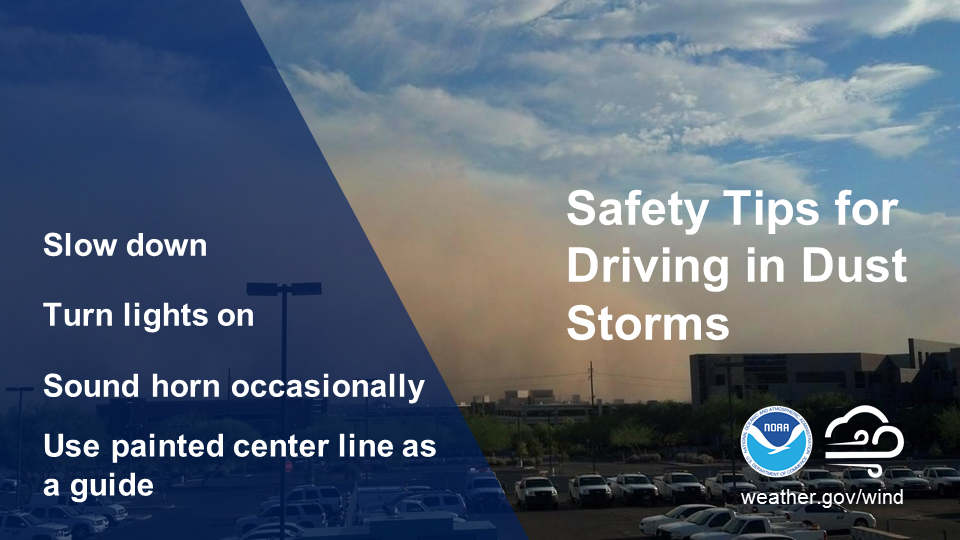
Facebook
Never stop on the roadway when you are in a dust storm. Pull over to a safe location on the shoulder or further off the road. Learn more at weather.gov/wind. #WindSafety
Twitter
Never stop on the roadway when you are in a dust storm. Pull off the road to a safe location. Learn more at weather.gov/wind. #WindSafety
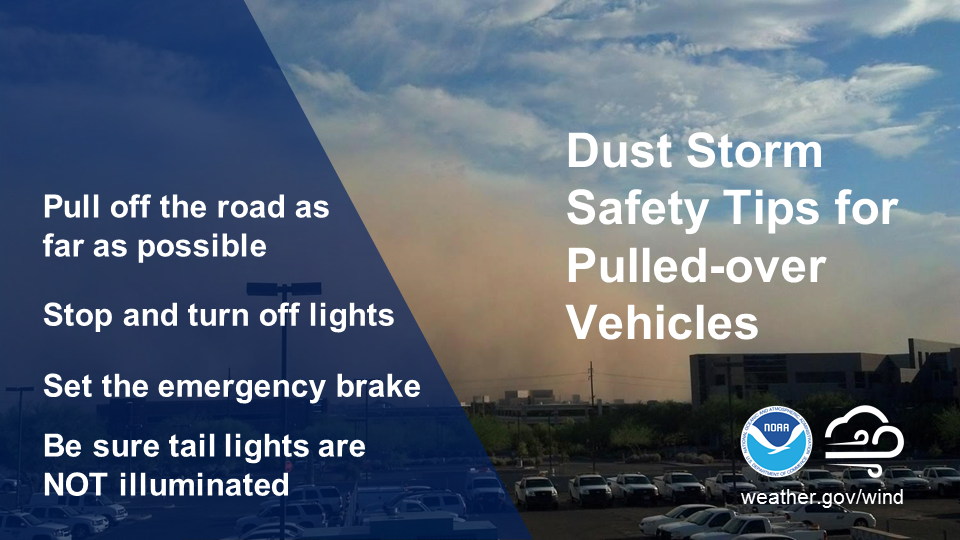
Facebook
High winds can make driving dangerous. If driving during windy conditions, slow down and keep two hands on the wheel, avoid large trucks and trailers, and be aware for downed tree branches or downed trees and power lines. Bridges and overpasses can be particularly dangerous to drive over when it is extremely windy so choose routes to avoid them. weather.gov/safety/wind-during #WindSafety
Twitter
When windy: slow down, keep two hands on the wheel, avoid large trucks, powerlines & trees. weather.gov/safety/wind-during
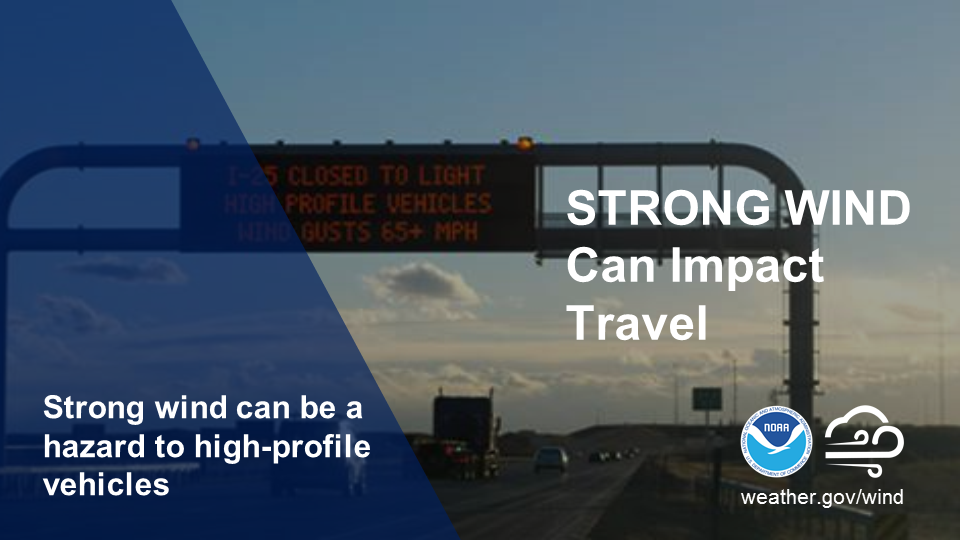
Facebook
Each year, numerous campers, hikers, and all-terrain vehicle riders are injured due to the wind. Falling tree branches and blowing debris are most often the cause. The wind doesn’t have to be that strong to knock a dead branch out of a tree. If you will be spending time outdoors when it is windy, adjust your plans to avoid areas with trees or other items that could cause injury. If high winds are forecast, consider rescheduling for a later date. weather.gov/wind #WindSafety
Twitter
Each year there are numerous campers, hikers, and all-terrain vehicle riders injured due to the wind. weather.gov/wind #WindSafety
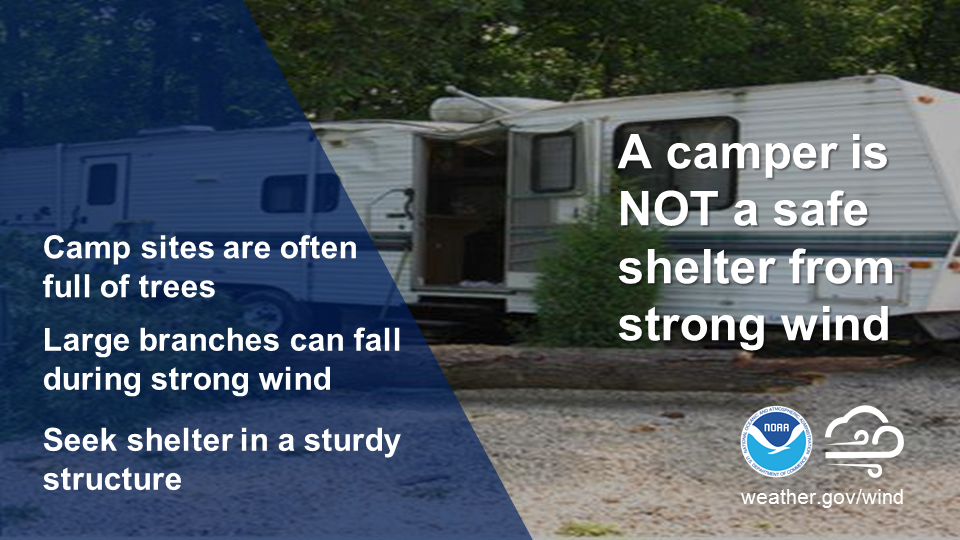
Facebook
Wind can be dangerous for those out on the water. Winds are the primary cause of waves and strong winds are dangerous because they create large waves. If high winds are forecast, adjust your plans so that you can have your boat safely stowed before conditions become hazardous. weather.gov/safety/safeboating #WindSafety (Photo courtesy of the US Coast Guard)
Twitter
Wind creates powerful waves, making conditions dangerous for boaters. weather.gov/safety/safeboating photo: @uscoastguard
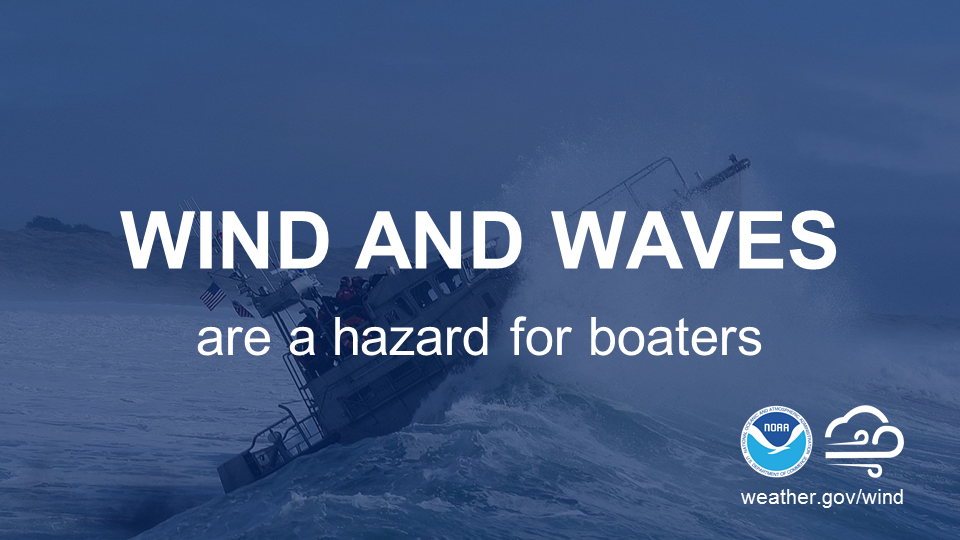
Facebook
Strong storms with whipping winds commonly impact the U.S. during the cooler months. Each year there are reports of trees and powerlines that have been knocked over and homes that have been damaged. Trim trees and shrubs and repair loose siding or shutters around your home well in advance of a storm. This can help reduce damage to your home. weather.gov/safety/wind-before #WindSafety #WeatherReady
Twitter
Before it gets windy, prepare your home! Trim trees & repair loose siding & shutters. weather.gov/safety/wind-before #WindSafety #WeatherReady
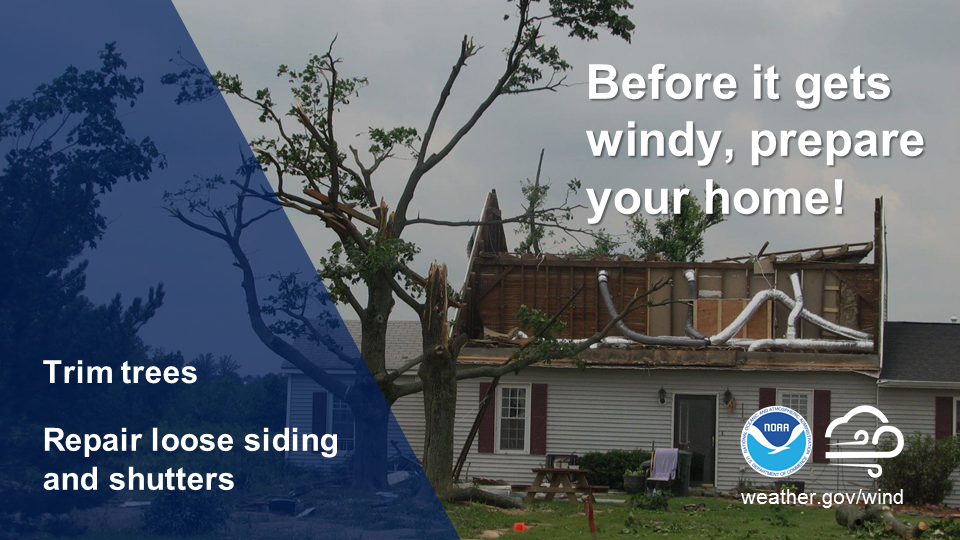
Facebook
Even the most common items become dangerous objects when picked up and carried by the wind! When a High Wind Watch or a Severe Thunderstorm Watch is issued, secure outdoor items such as patio furniture, sports equipment and trash cans. Have dead tree branches that are near your home taken care of before the next strong storm system blows through. weather.gov/safety/wind-during #WindSafety
Twitter
Even the most common items become dangerous objects when picked up and carried by the wind! weather.gov/safety/wind-during #WindSafety
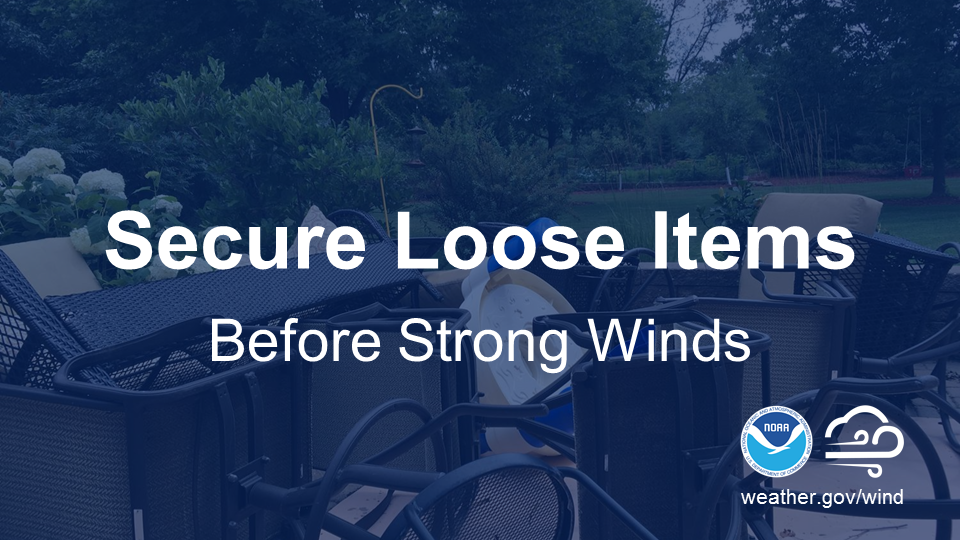
Facebook
Powerful storms can pack a windy punch. Don’t wait until you’re in the dark! Check your emergency kit now to ensure you have plenty of batteries and other essential supplies on hand. ready.gov/kit #WindSafety #WeatherReady
Twitter
Powerful storms can pack a windy punch, knocking out power. Are you ready? ready.gov/kit #WindSafety #WeatherReady
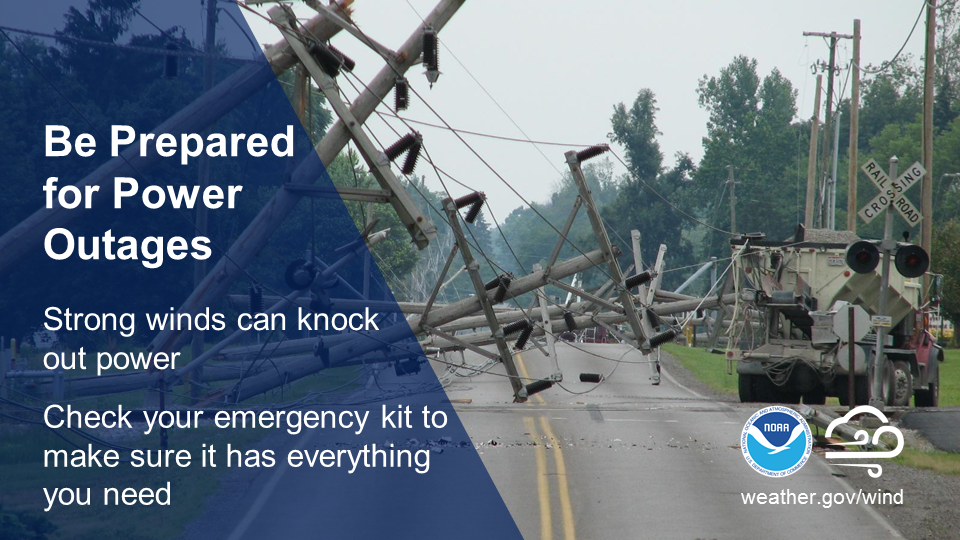
Facebook
Your family may not be together when a disaster strikes so it is important to plan in advance: how will you get to a safe place; how will you contact one another; how will you get back together; and what will you do in different situations. Create a Family Communications Plan. http://www.ready.gov/make-a-plan #WindSafety
Twitter
Your family may not be together when a disaster strikes. Make a plan. http://www.ready.gov/make-a-plan #WindSafety
